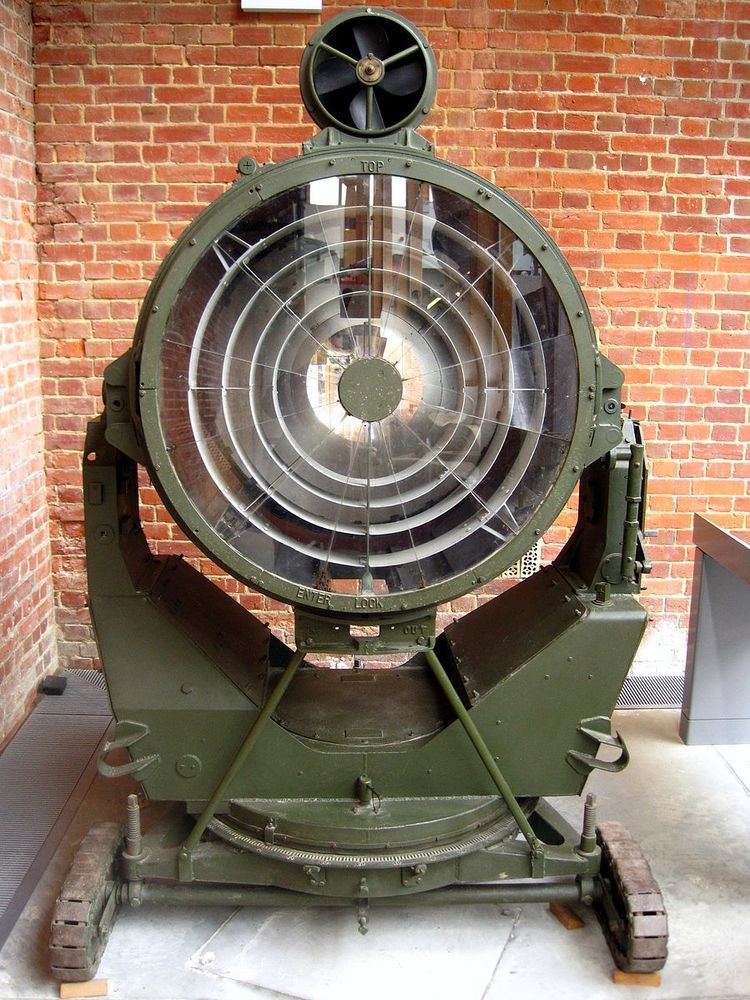Active 1938–1957 Branch Territorial Army Role Air Defence | Type Anti-Aircraft Brigade | |
 | ||
Part of 1st AA Division2 AA Group | ||
The 38th Light Anti-Aircraft Brigade (38 AA Bde) was an air defence formation of Britain's Territorial Army formed just before World War II, which protected London during The Blitz and later converted into an infantry formation for the liberation of Europe.
Contents
Origins
The brigade headquarters was formed on 28 September 1938 by duplicating the 26th (London) Anti-Aircraft Brigade at the Duke of York's Headquarters in Chelsea, London, as part of the expansion of Britain's Anti-Aircraft (AA) defences before World War II. The brigade was composed of searchlight units of the Royal Artillery (RA) and Royal Engineers (RE) and formed part of 1st AA Division, which came under Anti-Aircraft Command the following year.
Mobilisation
The deterioration in international relations during 1939 led to a partial mobilisation of the TA in June, after which a proportion of TA AA units manned their war stations under a rotation system known as 'Couverture'. Full mobilisation of AA Command came in August 1939, ahead of the declaration of war on 3 September 1939. At this time the brigade had the following order of battle:
Blitz
In August 1940, the Royal Engineers AA battalions were transferred to the Royal Artillery and were termed Searchlight Regiments. By now, the 27th (London Electrical Engineers) had been transferred to 47 AA Bde covering Southampton, and had been exchanged with 35th (1st Surrey Rifles) Searchlight Regiment, Royal Artillery. In October, 38 AA Bde was joined by the newly raised 79th Searchlight Regiment, Royal Artillery.
During the Blitz of 1940–41, 38 Light AA Bde provided the searchlight component of 1 AA Division, directing the Heavy (HAA) and Light (LAA) anti-aircraft guns defending London. 1st AA Division had established a control centre at the disused Brompton Road tube station, with an elaborate network of dedicated telephone lines linking the AA sites across the Inner Artillery Zone (IAZ), including many isolated searchlight positions.The London IAZ extended from Cheshunt and Dagenham in the east to Bexley and Mitcham in the south and to Richmond and Northolt in the west, with three brigades of guns deployed. Superimposed across the IAZ were the 73 searchlight sites controlled by 38th AA Bde.
In the absence of inland radar coverage, 1st AA Division's Chief Signals Officer, Lt-Col G.C. Wickens, devised a system of 14 fixed base-lines of sound locators to detect night raids approaching the IAZ. These were linked by automatic telephone equipment to the Brompton operations room, where the angular plots were resolved to indicate grid squares where the HAA guns in range could fire an unseen barrage. Detachments of 75th Searchlight Regiment from 38th AA Bde were trained to opeate te base lines. This 'Fixed Azimuth' system came into action in June 1940, in time for the opening of the night Blitz on London. It was later replaced as searchlight control (SLC) and gunlaying (GL) radar systems were introduced.
75 (Middlesex) S/L Regt converted to the LAA role in Home Forces in February 1941 and was later sent to Middle East Command. 35 (1st Surrey Rifle) S/L Regt also converted to LAA in Home Forces in March 1942, while 79 S/L Regt disbanded in December 1944.
In 1942 AA Command abolished its hierarchy of divisions and corps, and established a single tier of AA Groups; 38 AA Bde was assigned to 2 AA Group covering South East England.
Conversion
By the end of 1944, 21st Army Group was suffering a severe manpower shortage, particularly among the infantry. At the same time the German Luftwaffe was suffering from such shortages of pilots, aircraft and fuel that serious aerial attacks on the United Kingdom could be discounted. In January 1945 the War Office began to reorganise surplus AA and coastal artillery regiments in the UK into infantry battalions, primarily for line of communication and occupation duties in North West Europe, thereby releasing trained infantry for frontline service.
A number of AA Brigade HQs in 2 AA Group were also converted: on 22 January 1945, HQ 38 AA Bde was converted into 304th Infantry Brigade under Brigadier C.A.H. Chadwick with the following units under command:
After infantry training, the brigade went to Norway in June 1945 to help oversee the surrender of the German occupying forces there.
Postwar
When the TA was reformed in 1947, 38 AA Bde was renumbered 64 AA Brigade, with the following order of battle:
When AA Command was disbanded in 1955 the brigade was placed into suspended animation, and formally disbanded at the end of 1957.
